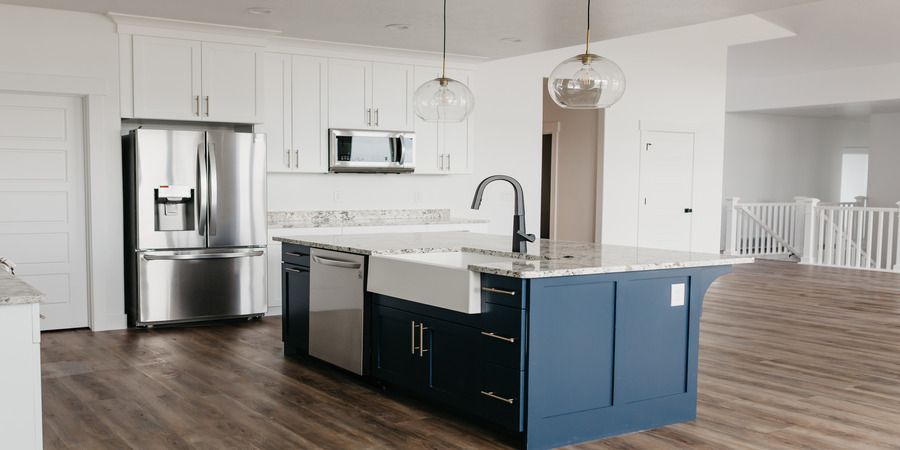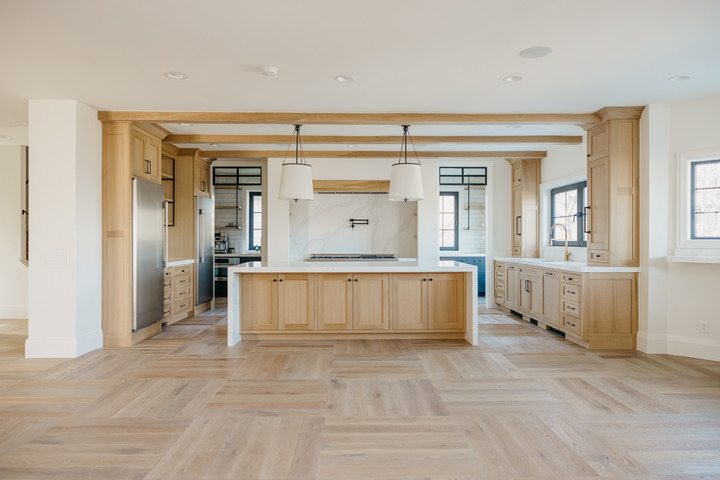
How to Build a Budget for Your Custom Home
You’re ready for that perfect home that has all the space and style you need, but how does planning a custom home budget work? When you’re ready to finally design and build your own custom home in Utah, the first step is understanding what goes into building a budget. We’re here to break it all down for you, step-by-step, so you can feel confident and prepared when you’re ready to take the leap toward a new custom home.
Step 1: Figure Out How Much Will You Be Able to Borrow
Use an online calculator to get an idea of the loan amount you’ll be offered and at what rate. This is the information you’ll need:
Credit Scores
Find out the credit scores for anyone who will be signing onto the loan from the federal government website or third-party online resources, like Credit Karma.
Income-To-Debt (ITD) Ratio
Add up any credit debt, your mortgage or rent, and student loans. An acceptable ITD ratio is a maximum of 36% for most lenders.
Down Payment
You’ll usually need to put 20% down, but it depends on the lender..
Step 2: Outline Your Must-Haves | Interview Design-Build Firms
Most people who are finally ready to build a custom home have been listing off their must-haves in their mind for quite some time. Now it’s time to get organized and make a concrete list. Include everything, no matter if you think it’s out of your budget or something you don’t “need.” Through the design process, your design-build team can help you edit, but for now, include it all.
What should you include on your list?
Absolutely anything you’d like to have in your new custom home! Here are a few examples:
- Overall design style: modern farmhouse, contemporary, rustic, luxury, mid century modern, etc.
- Rooms needed/wanted: how many bedrooms and bathrooms, size of kitchen, mudroom, laundry room, home gym, office, playroom, basement ideas, outdoor kitchen
- Features per room: freestanding tub, double kitchen island, primary bedroom sitting area, steam shower, heated floors, custom storage
- Whole home features: energy efficiency, smart home technology, lots of natural light, Bluetooth enabled surround sound
- Your favorite finishes: marble or quartz countertops, luxury vinyl tile or ceramic flooring, brick fireplace, specialty tile in the bathroom, custom lighting
%20(1).jpg?width=720&height=480&name=10xv21AC-136%20(1)%20(1).jpg)
Step 3: Designing with Your Custom Home Budget in Mind
The more details you have going into your design meeting, the better your architect and builder will be able to guide you through the design and product selection phase. Your builder will have the latest industry knowledge about pricing, and your architect will know exactly how much of a product you’ll need in each space.
Step 4: Get Pre-Approved for a Construction Loan
Once design has begun, get pre-approved for a loan to know exactly how much you will be able to work with before finalizing your design. Construction loans will be used to buy land, pay for construction, permits, other fees, and closing costs. There are two different types of construction loans:
Construction-to-Permanent Loan
This loan will transition into a permanent mortgage and you’ll keep the same rate.
Construction-Only Loan
This loan will cover the construction expenses and permits. Once your home is built, apply for a mortgage within a year, possibly with a better rate now that you have equity.
Important Note!
It’s best to compare at least 3-5 loan rates. The lenders will send an offer within three days and you’ll have only 45 days to apply for a loan for all of the pre-approvals to count as one credit inquiry together. Make sure to communicate with your builder so they can have your contracts, plans, and other important documents ready for you to apply.
Step 5: Building Your Custom Home Budget
We’re finally ready to talk about the budget breakdown! Now that you know how to calculate your budget and get approved, you can look at what percentage of your budget will go to each part of your custom home.
Land
If you’re using part of your budget to purchase land, subtract that amount from your loan and the rest will be used to build your custom home. Already have land? All of the loan amount will go into your build.
Design-Build Fee: 15-20%
This is industry standard, and less should raise a red flag about the quality of the company.
Site Preparation 3-5%
The amount of site preparation will depend on your land, but usually includes:
- Water tap and sewer fees
- Temporary electrical pole
- Soil Testing
- Surveys
- Demolition (if there’s an existing structure)
- Building Pad
- Tree Clearing and Grading
Foundation: 5%
Framing: 15-17%
- Lumber
- Timber
- Steel
- Trusses
- Stairs
Exterior Finishes: 15-17%
This is where your product choices really come into play.
- Masonry, stucco, siding, or brick
- Windows and doors
- Roofing
- Gutters and flashing
Major Systems Rough-ins: 10-12%
- HVAC
- Plumbing
- Electrical
- Natural gas
- Security
- Smart technology
Interior Finishes and Fixtures: 25-30%
Because this item is the biggest part of your budget–and includes a lot of decisions–you’ll lean on your designer to choose finishes that get you the style you want but within your budget. The cost can really get away from you here, so be prepared to compromise on the grade of one finish to make room in your budget for a wish-list finish and keep your budget balanced.
- Countertops
- Flooring
- Trim
- Lighting
- Cabinetry
- Appliances
- Paint
- Plumbing fixtures
- Insulation
- Masonry
- Drywall
General Conditions: 5-7%
These are needed to keep your crew safe and comfortable while building your custom home.
- Building permit
- Insurance
- Temporary commode
- Construction utilities
- Clean-up
- Safety rails
What's Missing?
This list might not include everything that should come out of your budget. Subtract these items from the overall budget if you’ll be using your loan to cover them.
- Interior design services
- Window treatments, rugs, furniture, etc.
- Landscaping
- Outdoor living spaces (if you’re hiring a separate builder to build your outdoor spaces)

More About Hiring a Design-Build Firm
We referenced working with a design-build team several times, and for good reason! Working with a design-builder offers convenience and a seamless process, rather than hiring an architect and builder separately. A design-build firm can bring your project from concept to construction, without having to change hands, risk miscommunications, and pay more in the long run. The best part? You’re getting a more stress-free experience but without sacrificing outstanding design!
10x Builders knows that your budget isn’t only one of the biggest concerns on your mind, but also how to respect it while designing and building the home you envision. We love building homes that exceed expectations, but not budgets–it’s our specialty. Reach out to 10x Builders to learn more about our process and tell us about your dream custom home.


